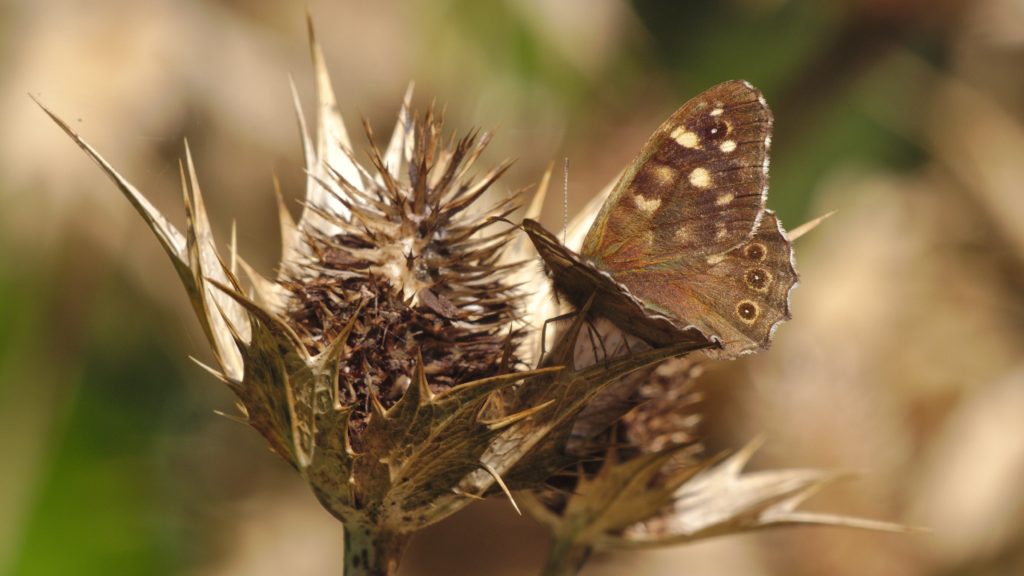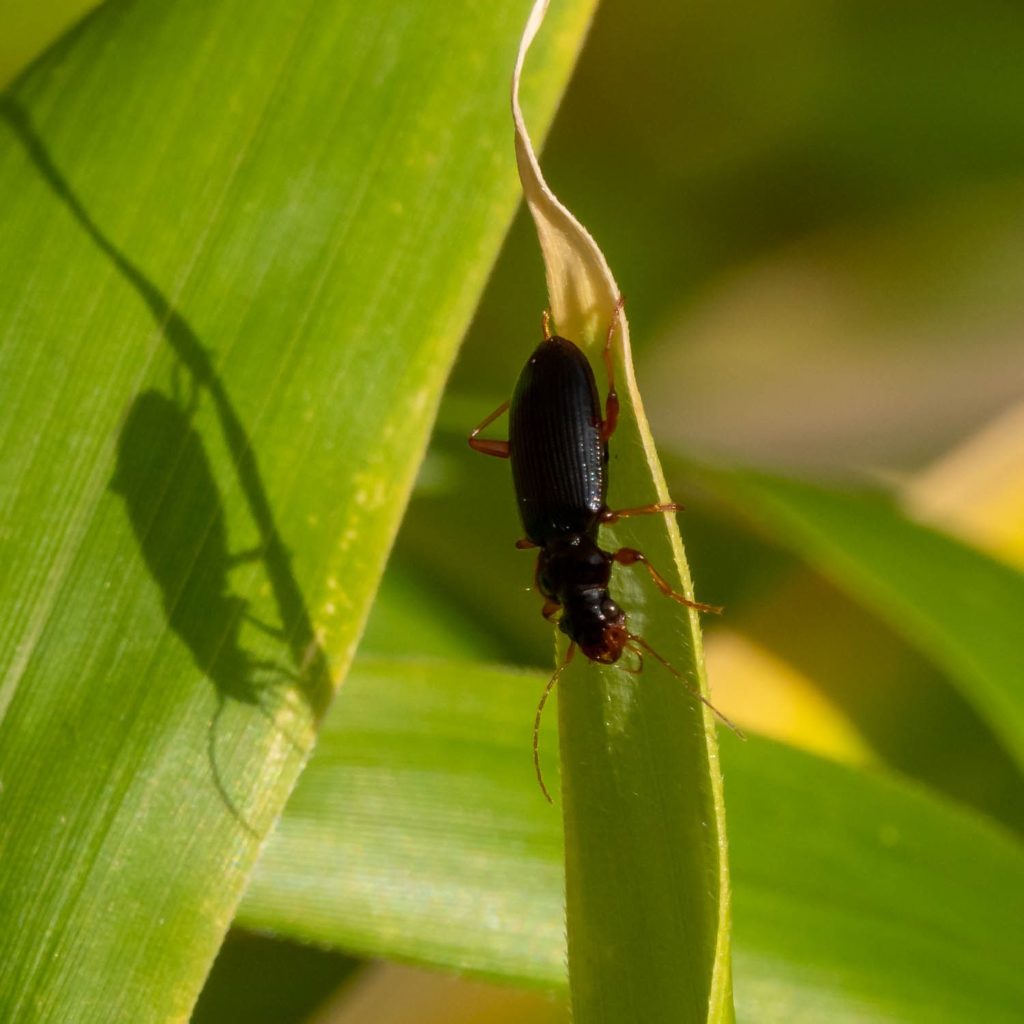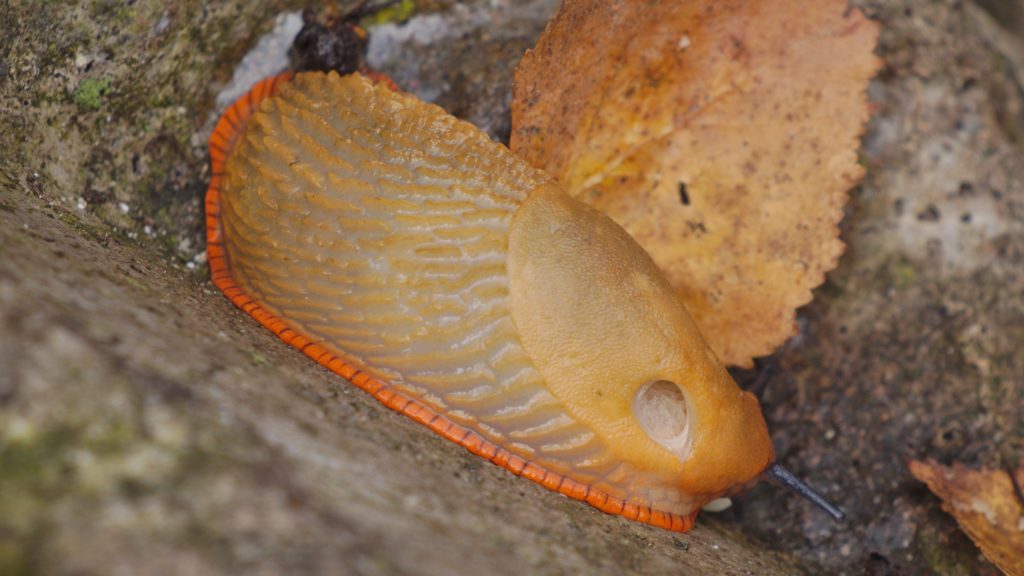
Yet again, October 2019 was both sunnier (117.4 hours, 117% of average) and wetter (106.2 mm, 134% of average) than an average Edinburgh October. Like September, most of the month’s rainfall was concentrated in only a few days, with 38.6 mm falling on 18th, more than 20 mm on 5th and more than 10 mm on 13th, while 18 days were dry or almost so. The highest maximum temperature was 16.4°C on 7th and the lowest maximum 7.6°C on 25th. The lowest minimum air temperature was -0.7°C and the lowest grass minimum -5.1°C, with ground frost on 11 nights.
Some of October’s sightings are yet to be identified but so far there are three new records that were made during the month, plus two identifications from earlier in the year. These five additions (a micro-moth, two flies, a springtail and a slug) bring the cumulative total up from 1,126 to 1,131.
Birds: Thirty-six bird species were recorded at RBGE during October 2019. Pink-footed Geese overflew the Garden at least twice, on 11th and 22nd. Autumn’ arrival was further marked by the arrival of Redwing on 10th, with records also on 28th and 31st. There was a redhead (female or immature) Goosander on the Pond on 20th and 24th. A Blackcap was reported in the Chinese Hillside on 24th also; whether this was a late-departing summer migrant or one arriving to winter is not known. Once again both Collared Dove and Grey Heron were present all month. Kingfisher was also seen throughout the month, frequenting both the main and Chinese Hillside ponds, with up to three birds (two males and a female) visiting. There were also 11 records of Grey Wagtail, 7 of Nuthatch and three of Tree Creeper. Sparrowhawk was seen on five occasions, including a very handsome male at the Chinese Hillside on 24th. Oystercatchers overflew on 10th, 22nd and 26th. The complete list of 36 species recorded during October 2019 was: Blackbird, Blackcap, Black-headed Gull, Blue Tit, Bullfinch, Carrion Crow, Chaffinch, Coal Tit, Collared Dove, Dunnock, Feral Pigeon, Goldcrest, Goldfinch, Goosander, Great Spotted Woodpecker, Great Tit, Greenfinch, Grey Heron, Grey Wagtail, Herring Gull, Jackdaw, Kingfisher, Long-tailed Tit, Magpie, Mallard, Moorhen, Nuthatch, Oystercatcher, Pink-footed Goose, Redwing, Robin, Song Thrush, Sparrowhawk, Tree Creeper, Wood Pigeon, Wren.
Mammals and amphibians: Fox was reported twice (13th and 28th), while Badger activity was also noted on various occasions. Common Frogs were active on four dates (1st, 3rd, 22nd, 26th), particularly in the small pool near the Botanic Cottage, where Palmate Newt was also seen on 1st.

Insects and other invertebrates: Five butterfly species were recorded during October. By far the most frequently seen was Red Admiral (16 occasions throughout the month, often by multiple observers). Speckled Wood was seen on six dates between 1st and 12th, Painted Lady three times (1st, 2nd & 11th), Small Tortoiseshell twice (24th & 26th) and Comma once, on 14th. The only moth record, identified from its leaf mine on oak, was Spotted Black Pigmy (Ectoedemia subbimaculata), a new Garden record. Tree Bumblebee was seen on 1st & 9th, while Buff-tailed Bumblebees, Common Carder Bees and Honey Bees were active throughout October, as well as Common Wasp. Second records of two ichneumon wasps both recorded for the first time in the Garden earlier this year were made: Achaius oratorius on 12th, and Ichneumon extensorius on 27th. October’s only dragonfly record was once again of a Common Darter on 2nd. October was a good month for hoverfly records, with nine species recorded, two more than in September. They included Banded Hoverflies throughout the month, Common Drone-fly on nine dates, Tapered Drone-fly on 1st & 26th, Marmalade Hoverfly on three dates, Melanostoma mellinum on 1st & 12th, the Footballer (Striped) Hoverfly on 12th and 20th, Eupeodes corollae on 1st, Epistrophe grossulariae on 7th and possibly also on up to three other occasions, and Xylota segnis on 12th. The cranefly Nephrotoma flavipalpis (26th) was a new Garden record, as was the fly Opomyza florum, seen on 5th September but only identified during October. Oher fly records during October were the bluebottle Calliphora vicina on 1st, Yellow Dung Fly on 12th and 21st, Tachina fera on 8th and the third and fourth records this year of the cranefly Limonia nubeculosa on 7th and 20th. Gorse Shield Bugs were noted throughout the month, while other shield-bug records were Hawthorn Shield-bug (six dates) and Birch Shield-bug (20th). Birch Catkin Bug (7th & 27th), a rather late adult Common Froghopper (7th) and a Black-kneed Capsid (10th) were also recorded. There were four reports of Pine Ladybird and one of 7-spot Ladybird, as well as five more sightings of Rosemary Beetle (between 14th and 20th). A ground beetle species, Leistus rufomarginatus, was seen and photographed on 20th; it is thought that this is the second Garden record of this beetle, the first one being during the June 2013 BioBlitz. A lacewing larva carrying debris was seen on 12th. Two February sightings of globular springtails were identified; one was the previously recorded Dicyrtomina saundersi, while the other turned out to be another species of the same genus, Dicyrtomina ornata, and a new Garden record. Both had been recorded on 11 February. Spotted Wolf Spider was reported on 21st October and a Cucumber spider species on 20th; there are two very similar cucumber spiders on the Garden’s list and it is not known which was seen. Yellowing autumn lime leaves still held a few nail galls of the two gall mites Eriophyes lateannulatus and Eriophyes tiliae. Finally a ‘large red slug’, originally thought to be the red variant of the common slug Arion ater, turned out to be a stunning example of the Large Red Slug, Arion rufus, a new record for the Garden. It is easily told from the red form of the ‘black slug’ by the bright orange fringe all round the sides of the animal.

